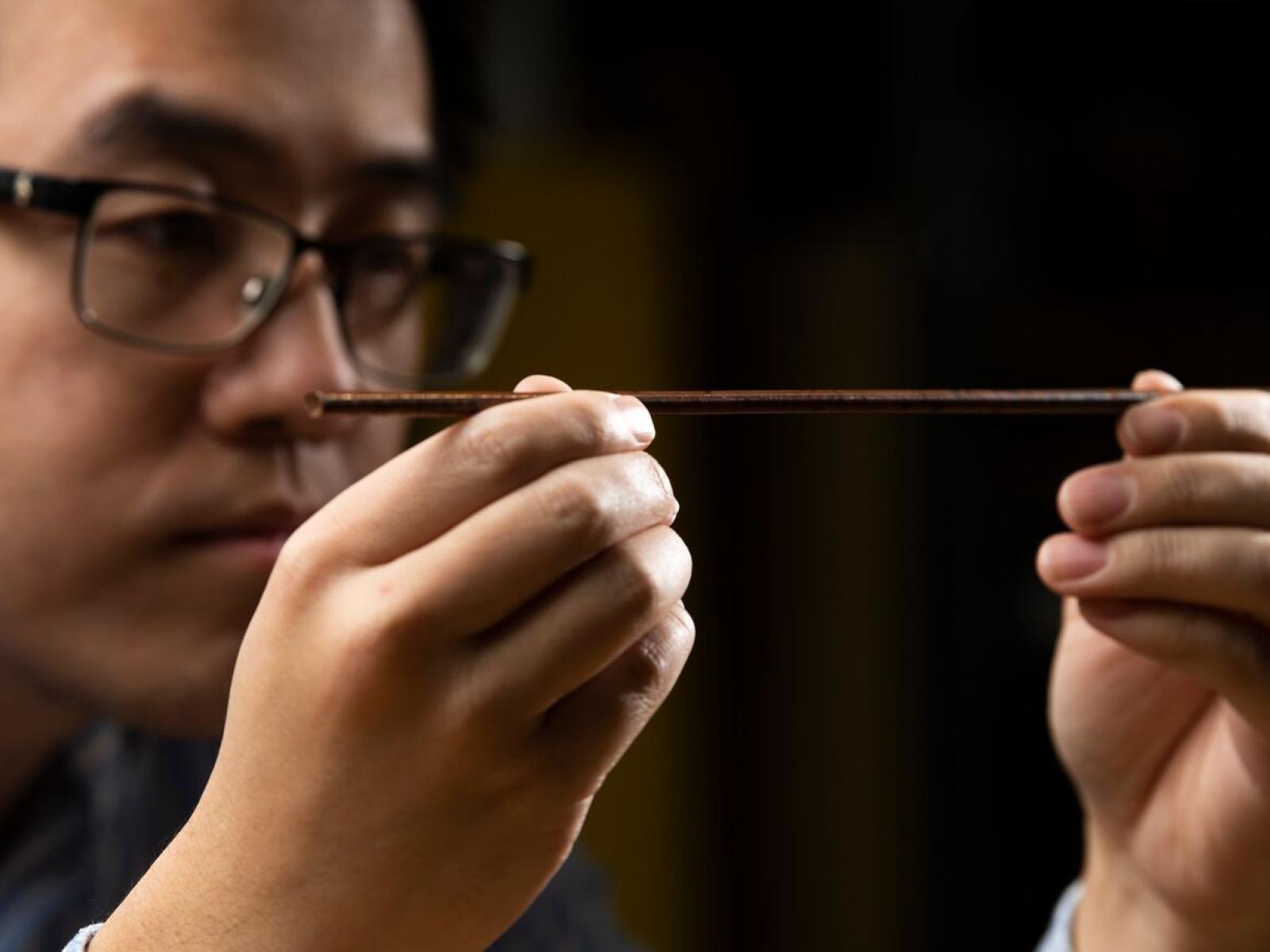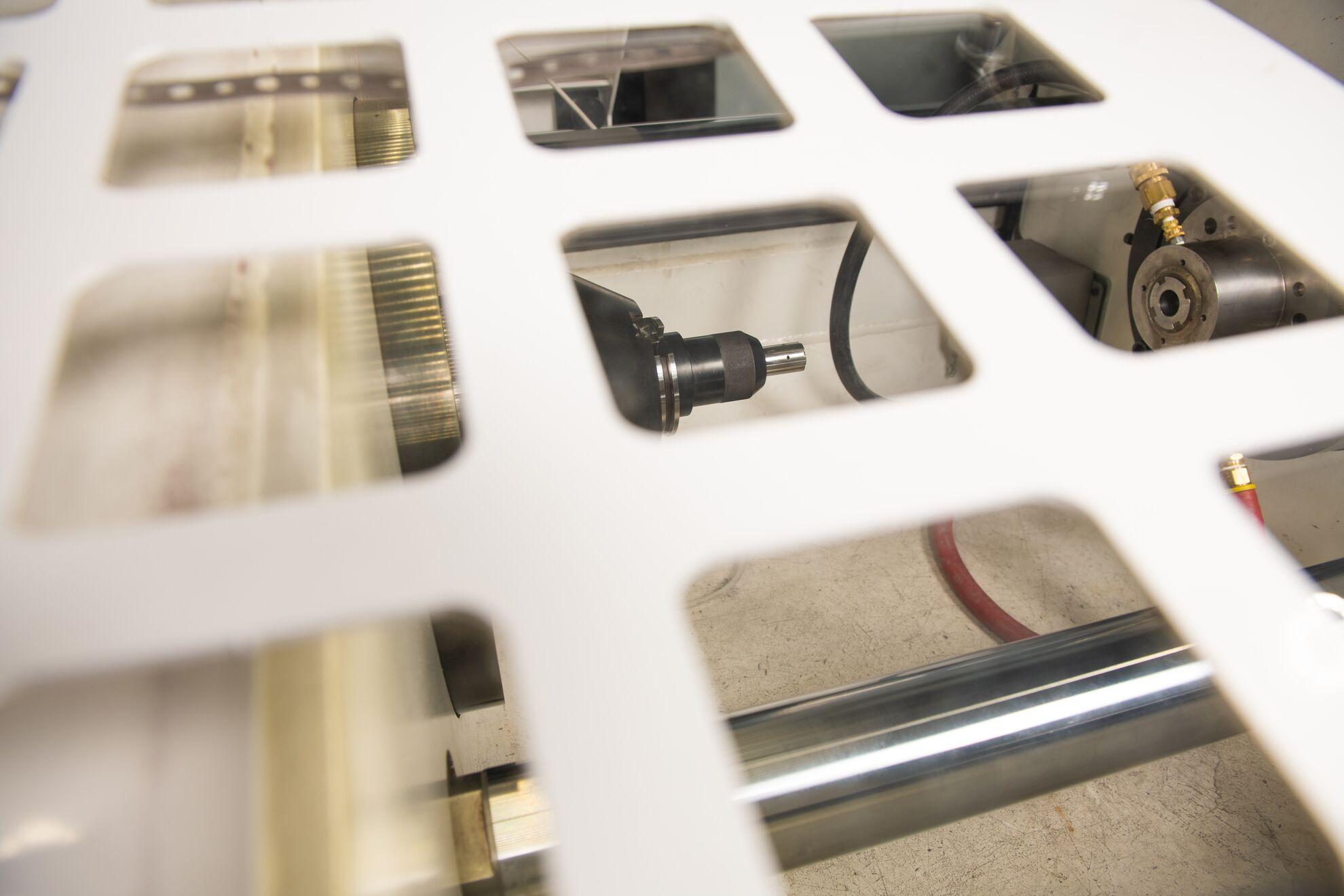Novel Manufacturing of Oxide Dispersion Strengthened Copper
Materials scientists develop single-step process to manufacture extruded product from powder

Xiao Li holds oxide dispersion strengthened copper extruded by Pacific Northwest National Laboratory’s Shear Assisted Processing and Extrusion, or ShAPE ™, technology.
(Photograph by Andrea Starr | Pacific Northwest National Laboratory)
A team of materials scientists at Pacific Northwest National Laboratory (PNNL) collaborated with Kymera International to discover a way to shrink down the multi-step process required to manufacture oxide dispersion strengthened (ODS) copper materials into a single-step, significantly reducing the time and energy required for manufacturing.
In manufacturing, materials are selected for their different properties. Copper is known for its thermal and electrical conductivity; however, its high manufacturing costs make it a no-go in many applications. ODS copper is a modification that increases strength by incorporating nanometer-sized oxide particles which reinforce the copper to make it stronger. There are many applications for copper where high strength is needed, such as fusion reactor components, particle accelerators, X-ray absorbers, and more.
The art and science of metallurgy
The conventional manufacturing process of ODS copper components is similar to barbequing; both of which are a bit of an art and a science. A grill master takes a unique series of steps—choosing the cut, marinade, cooking technique, deciding which temperature, and the amount of time to cook—before achieving the final outcome of a mouth-watering meal. Similarly, powder metallurgy can take on a variety of iterations to achieve the final component, and each practitioner may take a slightly different approach depending on a variety of factors. In metallurgy, copper is heated and compressed in a series of steps before the final outcome is created. The process can resemble the “low and slow” mantra of any good grill master. Just like good barbeque, metallurgy is often a time-consuming and energy-intensive process.
Research published in the Journal of Manufacturing Processes demonstrates how the PNNL team took the opposite approach of “low and slow” by using friction extrusion. Cutting many steps down to one, they were able to manufacture meters-long ODS copper rods directly from powder. And as an added benefit, the resulting component’s mechanical properties, including hardness, tensile strength, and ductility, were found to be better or similar to conventional manufacturing methods. According to lead author, Xiaolong Ma, “We looked closely at the extrudate under an electron microscope and found that the original oxide dispersion was decently maintained.” Other PNNL authors include Ethan Nickerson, Tianhao Wang, Dalong Zhang, Scott Whalen, and Xiao Li.
Skipping steps means manufacturing efficiencies
This approach to manufacturing uses the Shear Assisted Processing and Extrusion, or ShAPE™, machine developed by PNNL. Using ShAPE, the team is able to bypass cumbersome measures used by traditional processes and save a considerable amount of space, time, and energy. Tom Pelletiers, vice president of New Business Development at Kymera International and co-author on the paper said, “this is the second project Kymera International has collaborated on with PNNL for conversion of advanced powder metals directly into usable solid form. The ShAPE technology continues to show promise for being a cost-effective method of delivering superior properties for our aluminum and copper powders compared to conventional forming. Friction extrusion may offer a new, low-cost, pathway for manufacturing ODS copper and other unique materials.”

This work is part of a larger body of solid-phase processing research at PNNL which uses innovative technologies and processes to significantly decrease the energy intensity of alloy and component manufacturing. Solid phase processing can circumvent the constraints imposed by conventional manufacturing methods and produce materials and components with extraordinary properties.
The research described in this paper was conducted under the Laboratory Directed Research and Development program at PNNL, a multiprogram national laboratory operated by Battelle for the Department of Energy.
Published: December 2, 2022